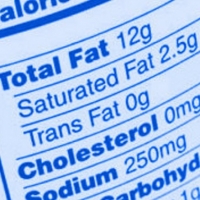2016/7/25 12:02:38

Basic Cycling Nutrition
As you start cycling you will naturally start to increase the distance of your rides, and possibly the intensity as well, so at this stage it’s a good idea to start thinking about nutrition on the bike. This doesn’t need to be hugely complicated, but a few cycling nutrition tips will certainly help you get through the ride and recover better as well.
So lets break this up into 3 stages without getting too technical:
Pre-ride
Always have a meal before a medium to long ride, (short rides not so necessary), preferably an hour or two before you start. Go for foods high in carbohydrates such as breakfast cereals, whole meal toast and baked beans or bananas and creamed rice. Have enough to give you that just full feeling, but avoid over-eating. It’s always good to start a ride not feeling hungry.
While Riding
Drinks. For rides under 90 minutes, then plain water is fine, but over that then electrolyte drinks are necessary. These basically replace lost salts and minerals which you sweat out under exertion. There are dozens of these on the market, so check with your local bike shop, or sports health shop. A rough guide is to consume one 750ml bottle every hour, but this will depend on the weather and how hard you’re riding. Obviously the hotter the weather the more you need to drink.
There’s an old adage that goes, once you feel thirsty then it’s too late. So drink regularly, roughly every 15 -20 minutes, right from the start of your ride.
Food. This a personal thing, but take some small snacks with you such as bananas, cookies, dried fruit, or commercial energy bars. You’ll need to experiment with this to see which suits. I personally find the energy bars very chewy and hard to swallow, especially if you’re working hard. I take soft muesli bars which I find far easier to chew and get down.
Again consume small amounts regularly say, every 30 minutes.
If you’re going for a long or hard ride, you might want to consider carbohydrate gels.
These are a sticky gel substance of pure carbohydrates usually contained with in a small sachet. They are quick acting and long lasting, but again don’t wait until you start to fatigue before taking these. Take one after an hour, then one every half hour.
Be warned these are very sticky, so take care when tearing off the end, that the substance doesn’t end up all over your hands and handlebars, otherwise it’ll bug you for the rest of the ride.
Follow these nutrition guidelines and you’ll avoid hitting the wall when your glycogen stores are used up.
Post Ride.
There’s a small window of time when you’ve finished your ride to replenish and refuel your glycogen stores, around 30-60 minutes is the standard thinking. During this period you should eat a mixture of carbs, calories and proteins, which contains the necessary nutrients to repair muscle tissue and restore glycogen levels.
This isn’t always easy to do, as it depends where your ride finishes and the availability of the correct foods. Suffice to say, endeavour to eat as quickly as you can, once your ride is over. Another option is recovery drinks, these are usually in a powdered form and mixed with water. These are a great idea as they have the necessary balance of carbs, calories and proteins required, making it easy. Again there are plenty of these on the market.
So in conclusion, following these simple cycling nutrition tips you will not only finish your ride in better shape, avoiding excessive muscle soreness, you will recover better and be able to ride again the next day.
If you're an athletic man in need of a good pair of cycling gloves, here
Eight Great Bicycle Riding Tips For You
Cycling is a fun sport and recreational activity, and loads of people love to post tips online for
Looking for an exercise plan that is easy to maintain, will keep you in shape and can be fun for th
Contact management E-mail : [email protected]
Copyright © 2005-2016 Outdoor sports All Rights Reserved